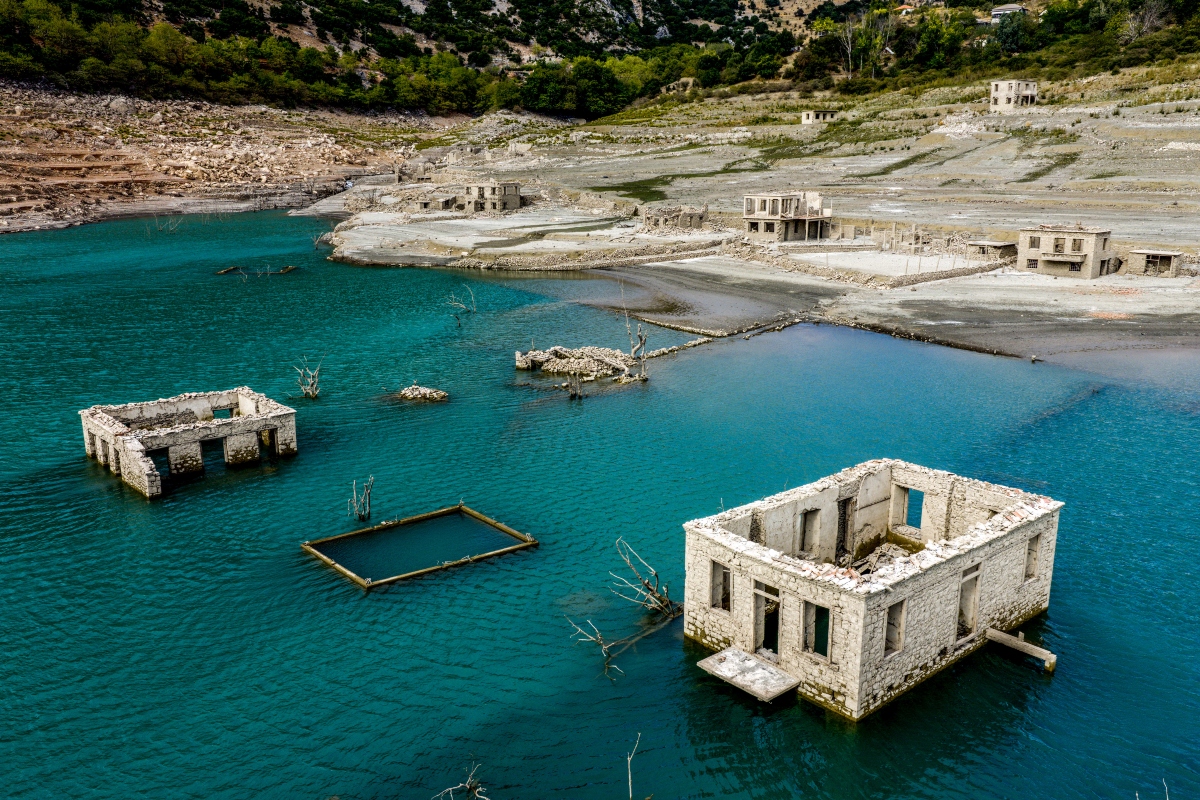A Region Running Dry
Attica, home to nearly half of Greece’s population, is facing an unprecedented water crisis. Reservoir levels have dropped to historic lows, with just 105 million cubic meters available — the lowest since 2002.
As temperatures rise and rainfall diminishes, the Greek government and EYDAP are racing against time to secure the capital’s water future for the next generation.
The €2.5 Billion Water Investment Plan
The 2025–2034 Water Resilience Program, worth €2.5 billion, is the largest water infrastructure plan in Greece in over 50 years.
Breakdown of investments:
- €729 million for water supply networks,
- €1.6 billion for sewerage projects,
- €193 million for energy efficiency and digital modernization.
The European Investment Bank (EIB) has already approved €250 million in financing, while additional funds will come from the EU Recovery and Resilience Facility and ESPA development programs.
Project “Evrytos”: The River Diversion That Will Refill Athens
At the heart of the plan lies Project “Evrytos” — the partial diversion of the Krikeliotis and Karpenisiotis rivers in Central Greece toward the Evinos reservoir.
With a €535 million budget, the project aims to supply 200 million cubic meters of water annually to Attica, ensuring 30 years of water security.
“This is a project of strategic importance. The water is high-quality, the operating cost minimal, and the environmental impact limited,” said EYDAP CEO Haris Sahinis.
The project will be implemented through a fast-track closed tender process, similar to Greece’s emergency “Daniel” projects, with completion targeted for 2029.
Plan B: Desalination Comes to the Rescue
If delays occur, the government’s Plan B involves three large desalination plants — in Thisvi, Nea Peramos, and Lavrio — with a total cost of up to €315 million.
These units will be modular and relocatable, allowing them to be redeployed to other islands or coastal areas if needed.“Desalination is a solution of necessity, not preference,” Sahinis noted. “It will only be activated if major delays hit the core project.”
Smart Water Networks and Leak Reduction
Water losses remain one of EYDAP’s biggest challenges. Current leakage rates stand at 15%, with the goal to reduce them to 10% within a decade.
The company is investing in pipe replacement, smart meters, and real-time digital leak detection systems, spending €90 million annually — a sixfold increase compared to previous decades.
Recycling and Reuse: Closing the Water Loop
Water reuse will play a key role in the strategy. Three new Wastewater Treatment Plants (WWTPs) will be built in Rafina, Marathon, and Koropi, alongside an expansion of the Psytallia facility, Europe’s largest wastewater plant.
The reclaimed water will be used for irrigation, industry, and green spaces, reducing potable water demand by up to 10%.
Securing the Islands
Beyond Attica, more than 151 water and sewerage projects worth €320 million are underway across 40 Greek islands — from Kastellorizo and Amorgos to Corfu and Crete — to ensure year-round supply and reduce dependence on costly water transport.
Water Prices and the Cost of Security
EYDAP admits that water tariffs in Attica have remained unchanged for two decades, limiting cost recovery. A new unified water pricing framework will be introduced in 2026, but officials stress that Athens’ water will remain the cheapest in Europe.
“Greek consumers enjoy some of the lowest water prices in the EU, and that will not change,” Sahinis said.
From Crisis to Sustainability
Greece is entering a new water era — one defined by innovation, resilience, and long-term planning. For Attica, this means moving from scarcity to stability, through a system that blends engineering, technology, and environmental stewardship.
The challenge is immense — but the alternative, a city running dry, is unthinkable.For now, Athens is betting €2.5 billion on a single promise: that the taps will never run dry again.
